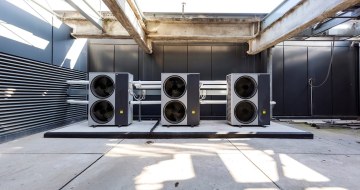
November 6, 2024 in Advisory Notes
Integrated Fire Mode Testing — Fundamental to Buildin...
Modern fire protection systems are now often integrated into other building systems and require a comprehensive testing approach to assure they will o...
April 9, 2021
Shutting down HVAC systems and / or stopping maintenance for an indeterminate period of time is problematic. Likewise stopping or modifying Fire services compliance testing and maintenance. Ongoing maintenance of Electrical distribution systems in many facilities is also required.
Starting up systems after a protracted shut down, especially those that are large, or complex or interdependent, can be challenging and costly requiring careful planning and supervision.
Building regulations in all States and Territories require regular and ongoing maintenance and inspection of the building services identified as required for the safe operation of the building in a fire event. This is important not only for building occupants but also for any attendance by fire brigade members.
These requirements are set out by Australian Standards including AS1851 and AS3666 and include Heating Ventilating and Air-Conditioning, Fire protection and Electrical systems. The building’s Essential Safety Measures often rely on the integration of active Mechanical and Fire protection services. Shutting down individual systems or elements may compromise the operation of the fire and life safety systems and compromise the ability to maintain compliance certification.
The safe operation and maintenance of cooling towers to prevent public health risk requires regular operation to circulate and treat water to manage and control microbial growth.

Where a building is occupied to any extent, essential fire safety systems and their ongoing inspection and testing regimes are required to assure the health and safety of occupants in a fire event. These systems should not be disabled or shut down.
If a building is to be placed into hibernation or shut down the following should be considered:

Completely shutting down mechanical and HVAC systems for a protracted period and then restarting, particularly large and complex systems, can cause a number of serious problems. The cost and implications of shutting down and starting up may outweigh any advantages.
Shutting down a building that is airconditioned by a central plant system comprising air handling units, chillers, boilers, cooling towers is not recommended. If a full HVAC services shutdown is required, this should only be undertaken after careful assessment of the systems design and operation, and the technical and compliance ramifications of a shutdown. Systems properly prepared before a shutdown will be more straightforward to restart and should have less issues. Poorly shut down systems will likely have problems including damage to systems components, corrosion, mould and pest infestation. On restarting, common issues include water and refrigerant leaks, odours and poor indoor air quality, air balancing and difficulty in maintaining internal conditions, excessive energy and water use and problems with building automation and control systems.
Shutting down, emptying and re-commissioning cooling tower systems requires a carefully managed approach to ensure regulatory compliance, the avoidance of damage whilst shut down and the protection of public health on recommissioning. Many cooling tower systems cannot be fully drained, and this results in stagnant water pockets and start up issues. Any change to cooling tower maintenance and testing regimes will require changes to Risk Management Plans. (Please refer to the A.G. Coombs Advisory Note: Cooling Towers – Operation During COVID-19).
A better alternative to shutting a building down and its services is to place the building into a hibernation mode. In this mode the building is effectively still operational however based on a limited set of parameters that will save significant operating cost and energy. This is can be likened to a low occupancy mode or after-hours operation
Features of a hibernation mode can include:
In this scenario with the building maintained in an “operationally ready” state it can go back into service quickly and with minimal issues. Appropriate maintenance and inspection also mean that essential safety systems will remain compliant.
There is also the opportunity during hibernation to carry out any planned plant replacement or upgrade works that may have been difficult to program or requiring of out of hours work. This may now be carried out during normal hours at a reduced cost.

There are important electrical regulatory tests required for the building to remain safe and compliant if a building is placed into hibernation or shut down. These include:
When buildings return to normal service pre-testing of electrical systems is strongly recommended to provide an adequate level of assurance that the equipment is safe to operate. These tests are particularly important if a building has been shut down. Electrical distribution systems sitting idle may operate differently when energised. Thermography scans, inspections and maintenance rectifications on all electrical switchboards alleviate this risk. This testing is also important to confirm the integrity of the busbar assemblies and associated switchgear and internal components are not compromised or show signs of degradation.
Most HVAC systems and Fire protection systems are not designed for protracted shutdowns. Many buildings never fully shut down and most only shut down for several days for Christmas and Easter public holidays.
Reticulated water systems including chilled water, heating hot water and condenser (cooling tower) water require regular circulation to avoid serious internal corrosion. These systems are usually dosed with chemicals to inhibit corrosion and cooling tower systems are typically continuously dosed with biocides to control microbial growth. Some reticulated hot and cold domestic water systems also require regular circulation to limit corrosion.
Large and expensive central plant including chillers, boilers, heat exchangers and pumps require regular circulation to avoid serious corrosion and other issues. Fire sprinkler pumps, both electric and diesel require regular operation and testing.
Building interiors may be adversely affected by the lack of air-conditioning and associated humidity control and air circulation. In many Australian climates mould growth can quickly affect internal surfaces – ceilings, walls and floors, furniture and artwork.
Insurance coverage will be compromised by non-compliant Essential Safety Measures maintenance and may be affected by inappropriate and protracted shutdown of HVAC services leading to lack of adequate internal conditions and consequential building interiors and systems degradation.
For further information or advice on the operation and maintenance of building services during COVID-19 please contact you’re A.G. Coombs, Walker Fire Protection, or Integrated Technical Management Contract Manager or A.G. Coombs Advisory:
Bart Taylor
General Manager, Melbourne
P: +61 3 9248 2700 E: btaylor@agcoombs.com.au
Andrew Bagnall
Leader Technical Advice, Sydney
P: +61 3 9248 2700 E: abagnall@agcoombs.com.au
Rakesh Ravichandran
Project Engineer, Canberra
P: +61 2 6217 5600 E: rravichandran@agcoombs.com.au
Rob Dagnall
Manager (QLD), Brisbane
P: +61 7 3648 0500 E: rdagnall@agcoombs.com.au
Published April 2020. While every effort has been made to ensure the accuracy of information in this publication, the A.G. Coombs Group assumes no responsibility for errors or omissions for any consequence of reliance on this publication.
Loading ratings...

November 6, 2024 in Advisory Notes
Modern fire protection systems are now often integrated into other building systems and require a comprehensive testing approach to assure they will o...

August 8, 2024 in Advisory Notes
Over the past decade, automated data analytics have been seamlessly integrated into various facets of our daily lives, including the operation and mai...

June 24, 2024 in Advisory Notes
Mould plays an important role in the natural environment as a break-down mechanism for dead organic matter. In the built environment it is an unwanted...

April 30, 2024 in Advisory Notes
A lot has changed since A.G. Coombs released our first Advisory Note on heat pumps back in 2018. Increasingly, asset owners are no longer asking if he...
Need Assistance? Speak with an A.G. Coombs representative today about ways to help improve and optimise your building for COVID-19.